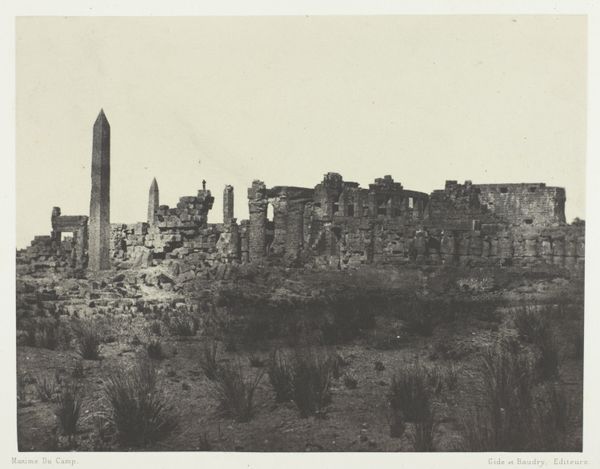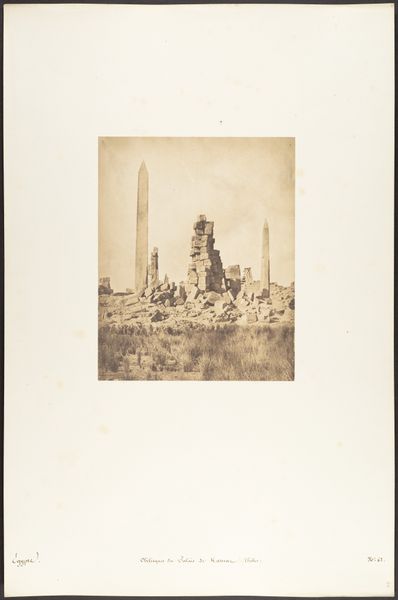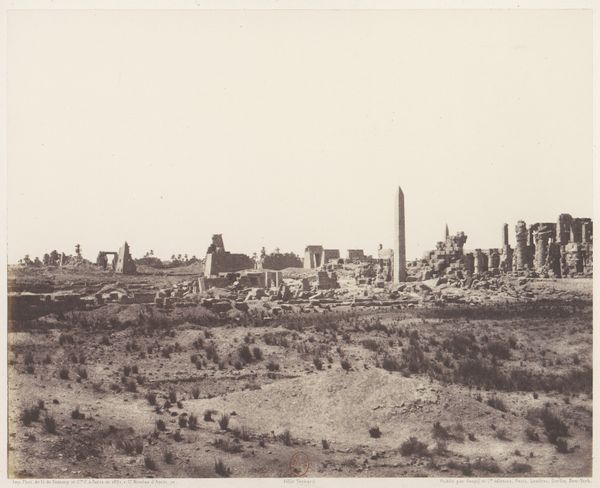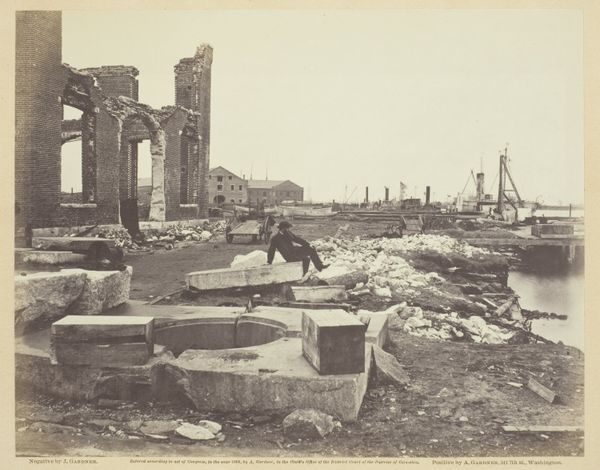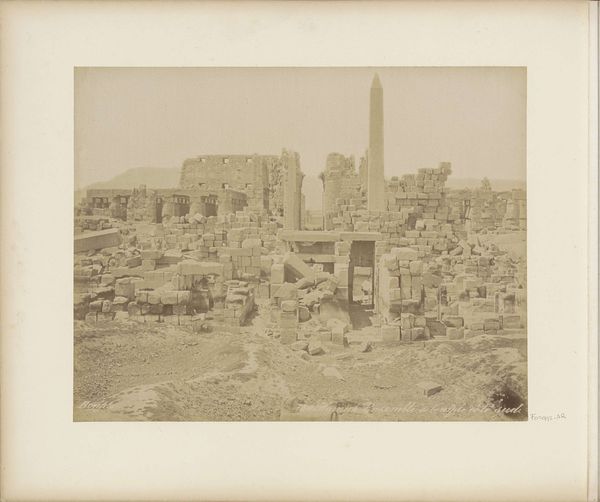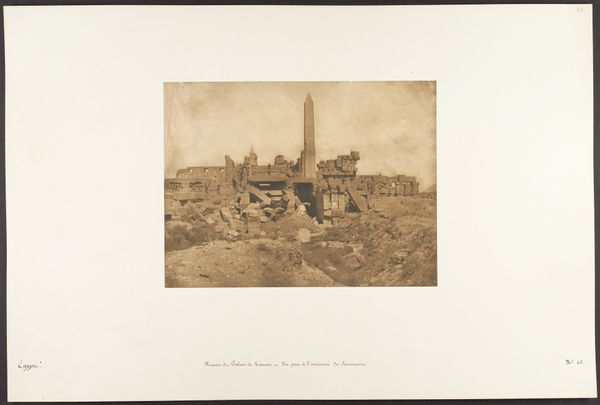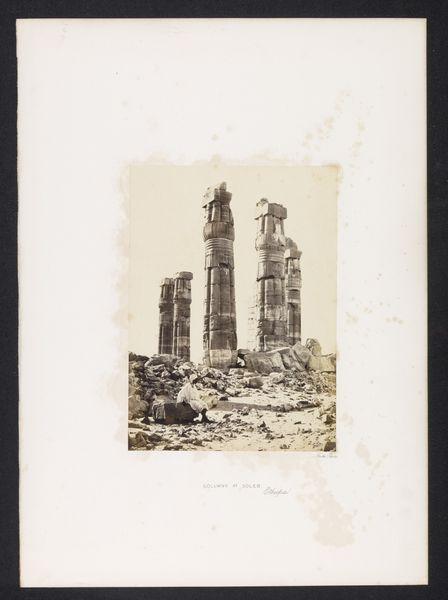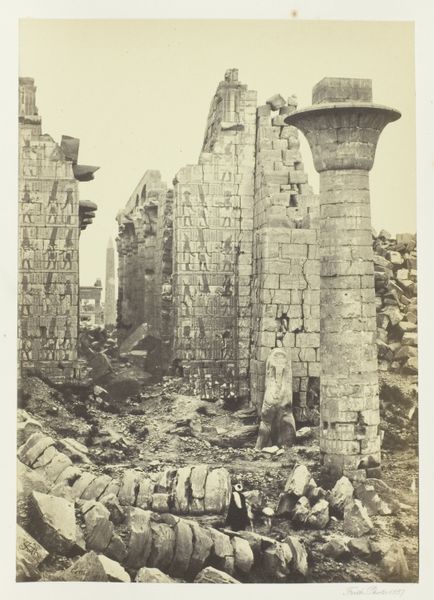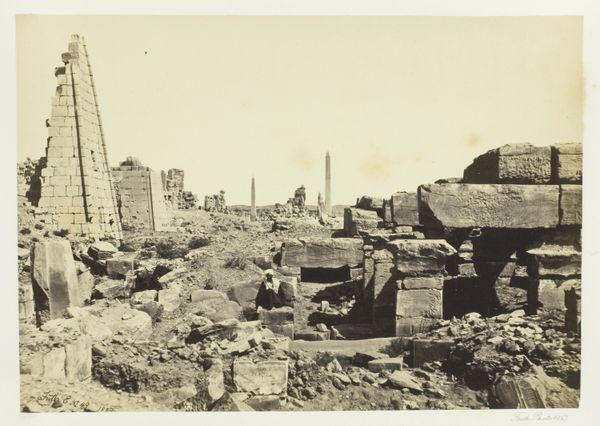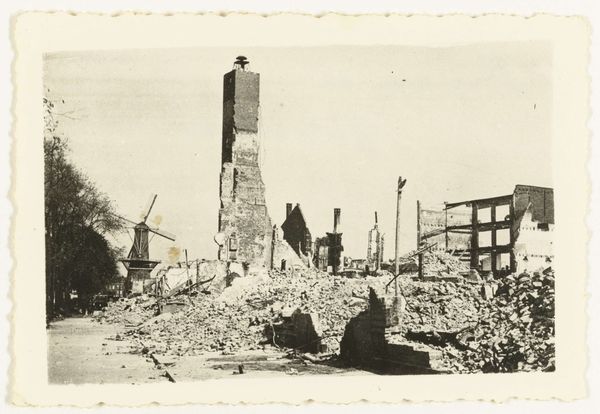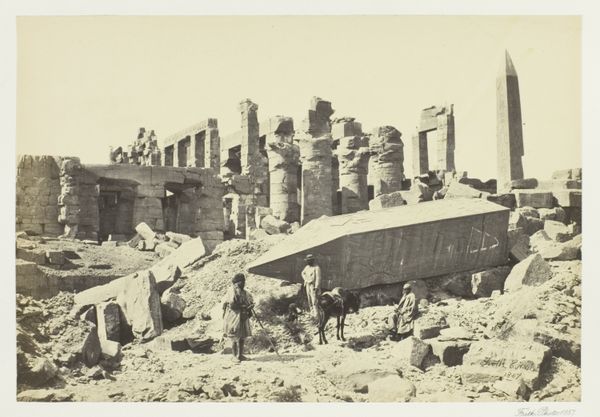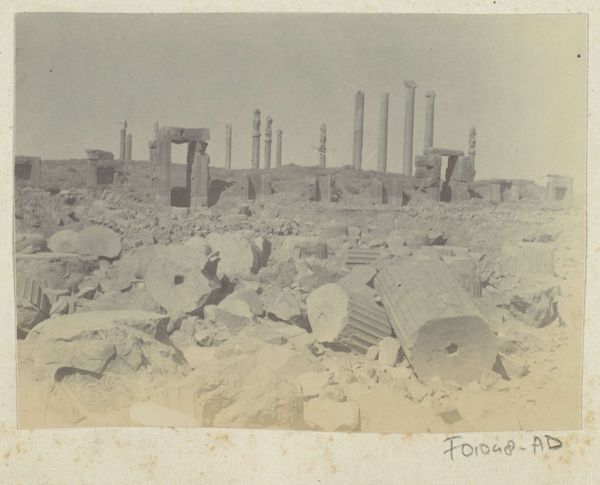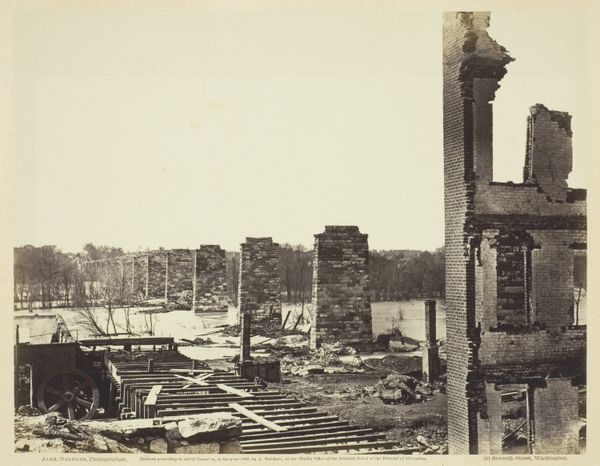
Palais de Karnak, Les Obélisques; Thèbes Possibly 1849 - 1852
0:00
0:00
print, daguerreotype, photography
# print
#
landscape
#
daguerreotype
#
photography
#
ancient-mediterranean
#
orientalism
Dimensions: 20.4 × 16.5 cm (image/paper); 29.7 × 42.9 cm (album page)
Copyright: Public Domain
Editor: Here we have Maxime Du Camp's "Palais de Karnak, Les Obélisques; Thèbes", dating probably from between 1849 and 1852. It's a daguerreotype, so an early type of photograph. There's such a striking stillness in the image despite the ruins being portrayed. It almost feels suspended in time. What grabs your attention when you look at it? Curator: Ah, yes! It speaks, doesn't it? This photograph transports me to an ancient world. It's more than just a depiction of ruins, it is a poem whispered in light and shadow, capturing not just the physical grandeur of Karnak but also the profound stillness you observed and the inevitable decay time imposes on even the grandest of civilizations. I'm drawn to the obelisks that punctuate the skyline. Do you think their survival amplifies the tragedy of the surrounding rubble? Editor: Absolutely! The obelisks stand defiant amidst the chaos. They become symbols of enduring power and the ambition of past civilizations against the backdrop of fallen stone. So, are they then defiant, or lonely, or something else? Curator: Maybe all of those, existing together! Think of the technical marvel this photograph was at the time. Capturing light, space, and depth of such an immense site using such a fragile, emerging process is astounding! And Maxime Du Camp’s gaze! He frames the image so that you feel like you are really THERE in Karnak. Can you almost feel the heat radiating from the stones? Editor: I can almost feel the grit under my sandals! The sharpness of the obelisks against the faded ruins makes the scene both distant and immediate. It definitely sparks the imagination! I'm beginning to understand how photography could capture the imagination in ways that painting alone could not. Curator: Precisely! That, I believe, is Du Camp's subtle genius at work here: He made an artifact out of the archaeological site. That’s time travel in its purest form.
Comments
No comments
Be the first to comment and join the conversation on the ultimate creative platform.
